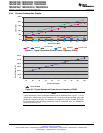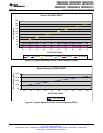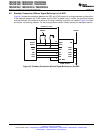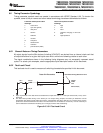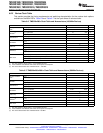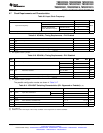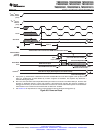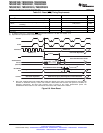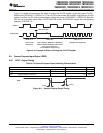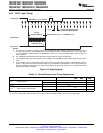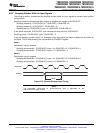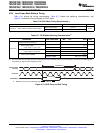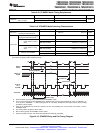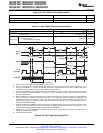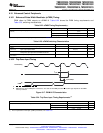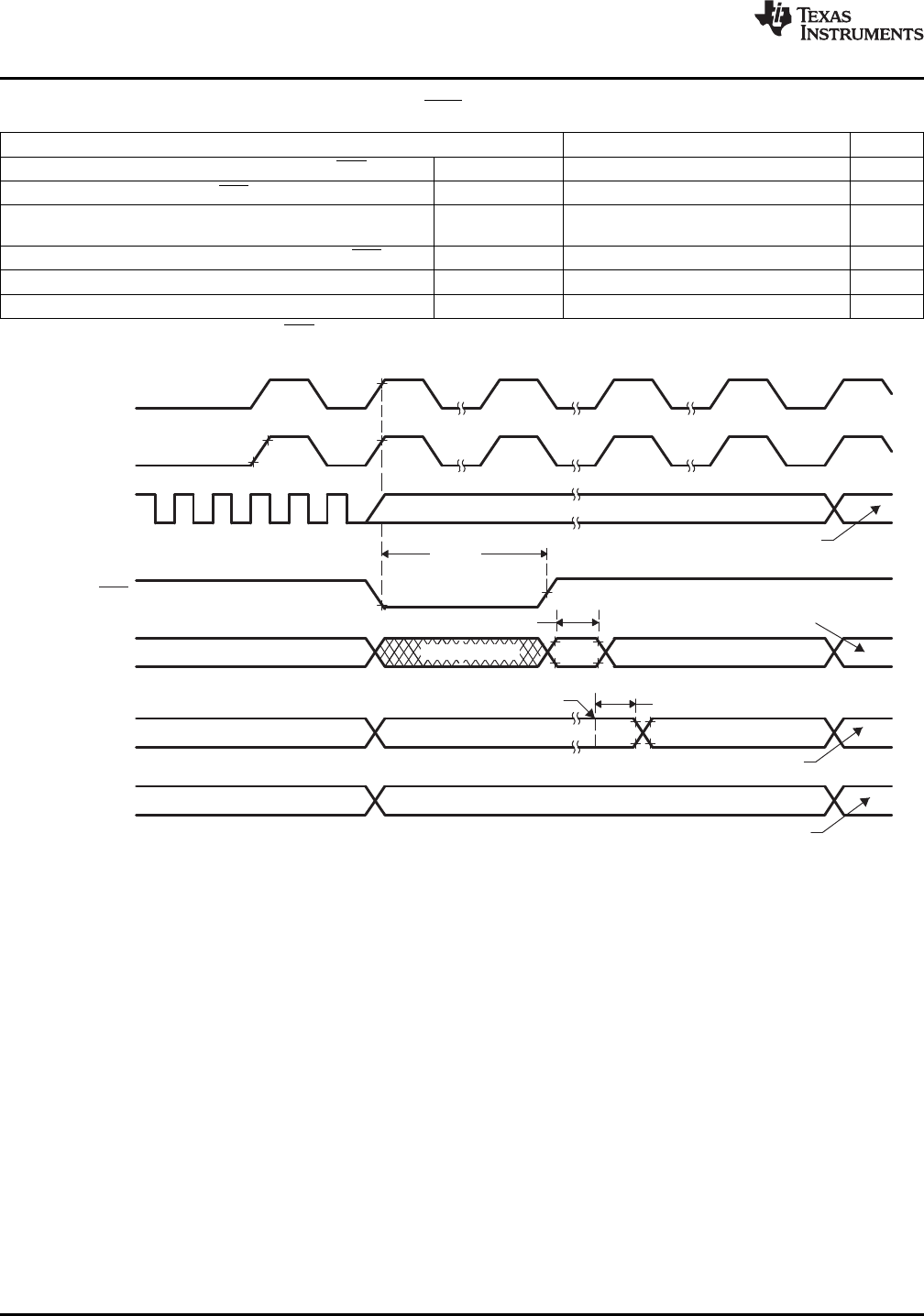
t
h(boot-mode)
(A)
t
w(RSL2)
XCLKIN
X1/X2
XRS
Boot-Mode
Pins
XCLKOUT
I/O Pins
Address/Data/
Control
(Internal)
Boot-ROM Execution Starts
User-Code Execution Starts
User-Code Dependent
User-Code Execution Phase
(Don’t Care)
User-Code Dependent
User-Code Execution
Peripheral/GPIO Function
User-Code Dependent
GPIO Pins as Input (State Depends on Internal PU/PD)
GPIO Pins as Input
Peripheral/GPIO Function
t
d(EX)
OSCCLK * 5
OSCCLK/8
TMS320F2809, TMS320F2808, TMS320F2806
TMS320F2802, TMS320F2801, TMS320C2802
TMS320C2801, TMS320F28016, TMS320F28015
SPRS230L–OCTOBER 2003–REVISED DECEMBER 2009
www.ti.com
Table 6-13. Reset (XRS) Timing Requirements
MIN NOM MAX UNIT
t
w(RSL1)
(1)
Pulse duration, stable XCLKIN to XRS high 8t
c(OSCCLK)
cycles
t
w(RSL2)
Pulse duration, XRS low Warm reset 8t
c(OSCCLK)
cycles
Pulse duration, reset pulse generated by
t
w(WDRS)
512t
c(OSCCLK)
cycles
watchdog
t
d(EX)
Delay time, address/data valid after XRS high 32t
c(OSCCLK)
cycles
t
OSCST
(2)
Oscillator start-up time 1 10 ms
t
h(boot-mode)
Hold time for boot-mode pins 200t
c(OSCCLK)
cycles
(1) In addition to the t
w(RSL1)
requirement, XRS has to be low at least for 1 ms after V
DD
reaches 1.5 V.
(2) Dependent on crystal/resonator and board design.
A. After reset, the Boot ROM code samples BOOT Mode pins. Based on the status of the Boot Mode pin, the boot code
branches to destination memory or boot code function. If Boot ROM code executes after power-on conditions (in
debugger environment), the Boot code execution time is based on the current SYSCLKOUT speed. The
SYSCLKOUT will be based on user environment and could be with or without PLL enabled.
Figure 6-9. Warm Reset
108 Electrical Specifications Copyright © 2003–2009, Texas Instruments Incorporated
Submit Documentation Feedback
Product Folder Link(s): TMS320F2809 TMS320F2808 TMS320F2806 TMS320F2802 TMS320F2801 TMS320C2802
TMS320C2801 TMS320F28016 TMS320F28015



